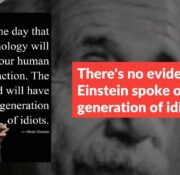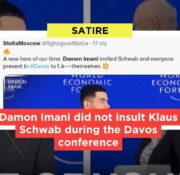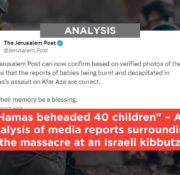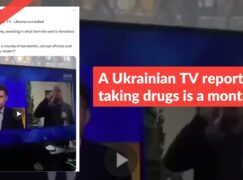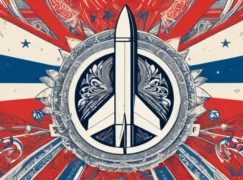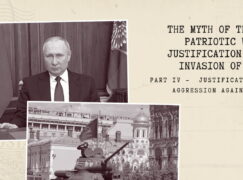22 June, 1941 was a turning point in the history of the USSR. The Great Patriotic War began. The German operation “Barbarossa” was to change both the course of World War II and the history of the entire world. And it did, although not in a way Adolf Hitler wanted it to happen, and the greatest historical myth of the Soviet Union grew from the ashes of war. It surpassed the legend of the October Revolution and the civil war in Russia in terms of grandiosity and enormity. The myth of the Great Patriotic War is still the foundation of the historical memory of Russians and the justification of the Kremlin’s imperial policy.
The brutality of the Eastern Front, the enormity of destruction, and the hecatomb of the USSR population as a result of the war became the cause of a huge trauma, which still remains deeply rooted in the Russian consciousness. It has become a breeding ground for Kremlin propaganda, used to control public moods and, above all, evoke antipathies towards other nations. Calling another country “fascist” immediately arouses certain sentiments in the Russian population, which leads to hostile attitudes. Such reactions have been observed since the beginning of the war with Ukraine, and their peak falls on the beginning of a full-scale invasion.
However, the myth of the Great Patriotic War first began to be built from the beginning of the war with the German Reich. This article, which is part one of the series analysing Russia’s historical policy in the light of World War II, focuses on this aspect. We will check how narratives were built around this topic during the conflict, after the war, and in the 1990s, before Vladimir Putin came to power.
World War II
The Eastern Front of World War II was a gigantic battlefield of two powers. Over thousands of kilometres, millions of soldiers conducted combat operations every day. No other theatre of war (in terms of land warfare) could compare to what was happening there. Epic clashes that went down in history, such as the Battle of Stalingrad, the Kursk Operation, or the capture of Berlin, became extremely important to Soviet propaganda. They were used as bricks in building the myth of the great Stalin, the powerful USSR, and the invincible Red Army, which ultimately painted the image of the Great Patriotic War in the eyes of the nations of the Soviet Union.
Battle of Yelnya
The former allies — the German Reich and the USSR — turned against each other on 22 June 1941, when the Wehrmacht violently invaded the territories of the Second Polish Republic occupied by the Red Army. This campaign, which had been coming for several months, became a long-term clash between two powers. The first months of Operation Barbarossa brought terrible defeats for the Red Army, which, despite strong resistance, suffered gigantic losses. Despite this, soon after the German war machine jammed.

Army Group Centre, after a lightning strike in the Smolensk direction, began to have problems with fuel and ammunition supplies in mid-July. Heavy fighting continued. However, it was here that in September 1941 the Red Army achieved its first, albeit primarily propaganda, success. It forced the Wehrmacht to retreat from the city of Yelnya. It was a victory achieved with dozens of senseless assaults and heavy losses, but the soldiers of the USSR regained a piece of their territory for the first time since 22 June, 1941. Soviet propaganda decided to seize this opportunity and build a winning myth around this battle, even though German soldiers left the city on orders and not as a result of a direct clash.
The battle became the first element of the myth of the Great Patriotic War and grew to the rank of a great symbol and the first victory over Nazi Germany. Despite the fact that the success was relatively small, and the Wehrmacht recaptured Yelnya again a few weeks later as part of Operation Typhoon and moved on Moscow.
The success of the Red Army itself became the basis for the creation of Guards units, which received this title for outstanding combat achievements. They were treated as elite Soviet formations. Their existence and combat route were an excellent breeding ground for Stalinist propaganda. It is worth noting that Guards units exist in Russia to this day (e.g. the 4th Guards Tank Division Kantemirovskaya).
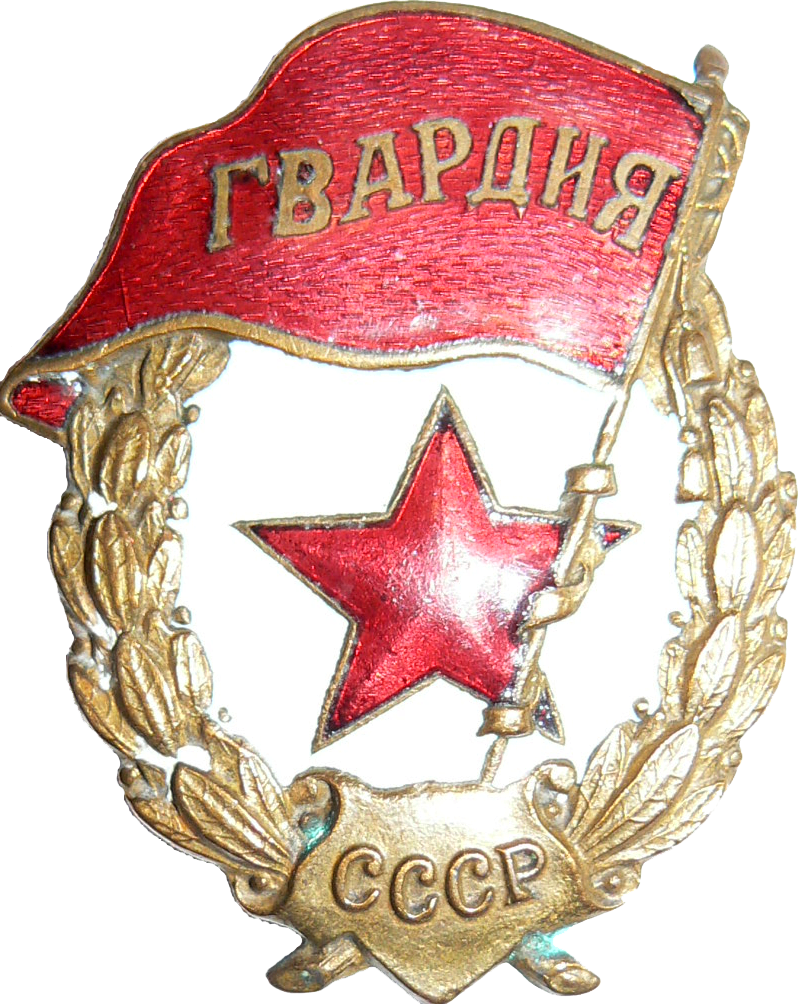
Battle of Moscow
The defence of the capital of the USSR grew to the rank of a great symbol of World War II. Depleted and exhausted from a several-month-long campaign, the two armies clashed on the outskirts of Moscow. It became clear that Soviet propaganda desperately needed the full mobilisation of society, industry, and the army. The fighting spirit had to be maintained at all costs. A great tool for this were people who could be painted as heroes. It was here — in late autumn on the outskirts of Moscow — that the legend of the Panfilov’s Men was manufactured.
28 soldiers from the 316. Rifle Division, commanded by Ivan Panfilov, became heroes of the Soviet Union. On 16 November, the entire group died in combat, bravely defending their section, killing dozens of Germans and destroying 18 tanks. Their story was described by Vasily Koroteev, a correspondent of the newspaper “Krasnaya Zvezda”. It became very popular, and all the heroes received the Order of the Hero of the Soviet Union, the highest decoration in the USSR. The words of Vasily Klochkov, the political officer commanding the Panfilov’s Men, also became legendary: “Russia is a vast land, yet there is nowhere to retreat — Moscow is behind us!”
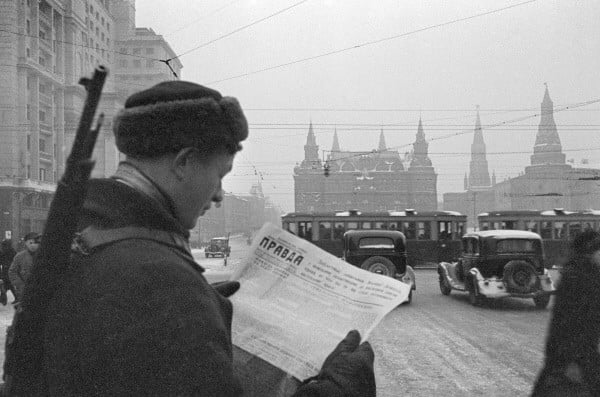
The Truth about Panfilov’s Men
In reality, however, Koroteev made up the whole story on the basis of a rumour he had heard. The fact is that the 316. Rifle Division fought in the Battle for Moscow near Dubosiekov and suffered heavy losses. It is also possible that many Soviet soldiers showed courage, but the details of the event itself were not true. Already in May 1942, it turned out that one of the soldiers who were on the list of 28 fallen Panfilov’s Guardsmen was in fact still alive. This fact was kept secret and the name on the list was changed under the guise of a “mistake”. In 1947, Ivan Dobrobabin, who was also on the list of Panfilov’s Men, was detained on charges of collaboration with the Germans. The situation led to an official investigation, which clearly showed that the story of the 28 heroes had little to do with the truth. Koroteev admitted that he had made up the details of the entire incident, and the investigation determined that 6 of Panfilov’s Men actually survived the war.
However, the leadership of the USSR decided to hide the truth. The official story remained intact—28 heroes died defending their homeland, after inflicting huge casualties on the enemy. After the war, many monuments were erected to them, and despite the revelation of the truth at the turn of the 1980s and 1990s, part of the Russian society still refuses to accept the real version of events. A perfect example is the film “Panfilov’s Soldiers” from 2016, whose director, when asked about the untruthfulness of the story presented in it, replied: “We made a film about heroes, about heroic actions. Our film solves this not very good dispute. The 316th Division was really there, the battles were there — and why undermine this feat at a time when the country is in particular need of heroes.”
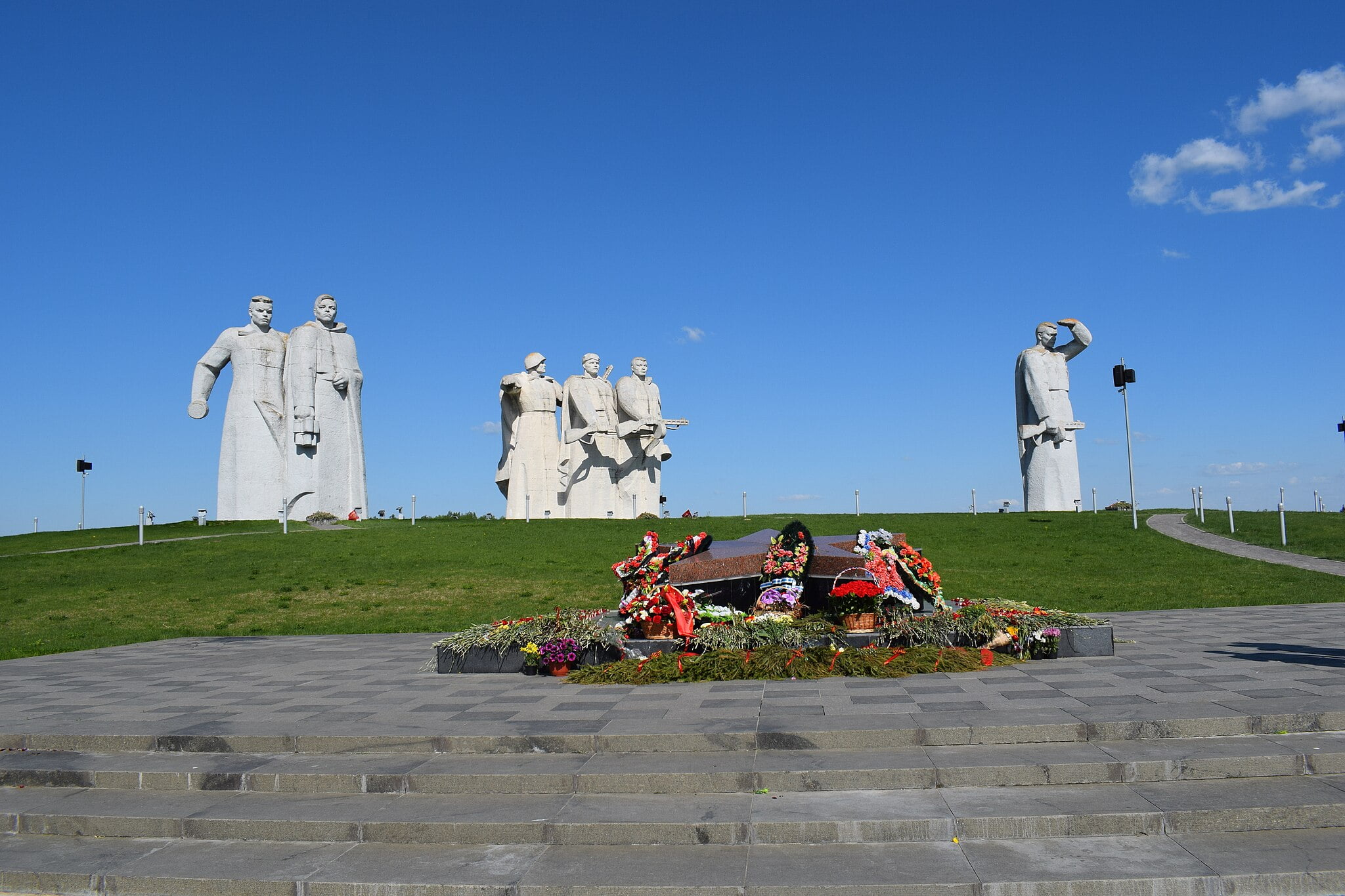
The Great Patriotic War — a unifying slogan
The above stories are just a few examples of the mythologisation of specific events during the Great Patriotic War. Numerous myths exist around the Battle of Stalingrad, the battles at Kursk, or the Berlin Operation. They also concern building the legend of the 1. Tadeusz Kościuszko Infantry Division and its battles at Lenino, which are surrounded by false images in the common consciousness. They were created together by the propaganda of the USSR and the communist authorities in Poland.
The general message created around the Great Patriotic War, which was to mobilise society to make an extra effort during the conflict, is also important. Propaganda, especially at the beginning of the war with the German Reich, did not use Joseph Stalin too much, so that he would not be associated with defeats at the front. Attention was redirected (contrary to communist ideals) towards patriotic rhetoric. The term Great Patriotic War was coined by Soviet propaganda on the basis of the term used to refer to Napoleon’s invasion of Russia in 1812 (the Patriotic War). The origin of this word choice was explained Dr Grzegorz Berendt, associate professor at the University of Gdańsk and former director of the Museum of the Second World War in Gdańsk during his interview for the Wprost magazine:
“Outside Russia, it is commonly accepted in historiography that World War II began in September 1939, with the German attack on Poland. This date is not convenient in the Russian historical narrative, because on 17 September the Soviets joined the attack on Poland. The term Great Patriotic War was coined by Soviet propaganda in order to try to unite this oppressed nation—and more precisely, the multinational society—under one banner, i.e. the Homeland. With love for homeland, the authorities wanted to cover the memory of the crimes committed by the Bolsheviks on their own society from the autumn of 1917 until the summer of 1941, and at the same time to erase national conflicts.”
Nationalist Propaganda
The nationalist-patriotic rhetoric was also intended to cover up the fact that in many cities and villages of the western republics of the USSR, Germans were welcomed as liberators from Stalinist terror. Therefore, it was necessary to present the aggressors as an existential threat to Soviet citizens. At the same time, a repressive state apparatus was implemented and any actions considered by the authorities as questioning the war effort were severely punished. The difficult situation and the need for full mobilisation of society were also emphasised. Contrary to the expectations of some, the Germans quickly introduced their own methods of terror, treating the population of the conquered territories as subhuman. This obviously aided the efforts of Stalinist propaganda to portray the enemy as bloodthirsty beasts.

The ideal Soviet citizen became a man ready to sacrifice everything for his homeland. Of course, this included giving one’s life as a soldier, but also working in a factory, which was treated almost equally to fighting at the front. Every citizen of the USSR was to work for the common good – the defence of the homeland against the fascist threat. There was one goal: to persevere. After the powerful blows at the beginning of the German invasion, the Soviet Union trembled to its foundations. Such gigantic losses would probably overthrow any other country. However, the USSR survived and was supposed to fight until the final victory, regardless of the losses and suffering of its own population. Every citizen had to sacrifice something, the life and well-being of the individual did not matter. The state, the party, and the nation were the highest values for which it was worth dying. At least this is how Soviet propaganda built its narrative. However, the result of World War II showed that it was effective. Despite the enormous blood sacrifice, the Red Army soldiers fought until the red banner hung over the Brandenburg Gate in Berlin.
After the War
After the war, the primary task of propaganda was to make sense of the gigantic losses and enormous suffering that had affected the population of the Soviet Union. The reality in which Soviet society functioned was perfectly described by N. Petrov and O. Edelman:
“The Soviet nation lived simultaneously in two realities: the empirical one and the one constructed by communist propaganda. And the latter, virtual reality was so versatile that, by dominating the former, it often subdued it: people believed more in the Soviet myth than in what they saw with their own eyes.”
The USSR as the Savior of Nations
The hecatomb of World War II resulted in a huge trauma for the Soviet society. The post-war identity of the Soviet Union was based on the myth built during the war, so that the citizens of the USSR had a sense of purpose and meaning of the terrible experiences. The Soviet Union was quickly portrayed as the liberator and saviour of Europe, emphasising its moral position. This is perfectly illustrated by Stalin’s speech of 9 May 1945 (the date of Germany’s capitulation to the USSR):
Three years ago, Hitler declared for all to hear that his aims included the dismemberment of the Soviet Union and the wresting from it of the Caucasus, the Ukraine, Belarus, the Baltic lands and other areas. He declared bluntly: “We will destroy Russia so that she will never be able to rise again.” This was three years ago. However, Hitler’s crazy ideas were not fated to come true—the progress of the war scattered them to the winds. In actual fact the direct opposite of the Hitlerites’ ravings has taken place. Germany is utterly defeated. The German troops are surrendering. The Soviet Union is celebrating Victory, although it does not intend either to dismember or to destroy Germany.
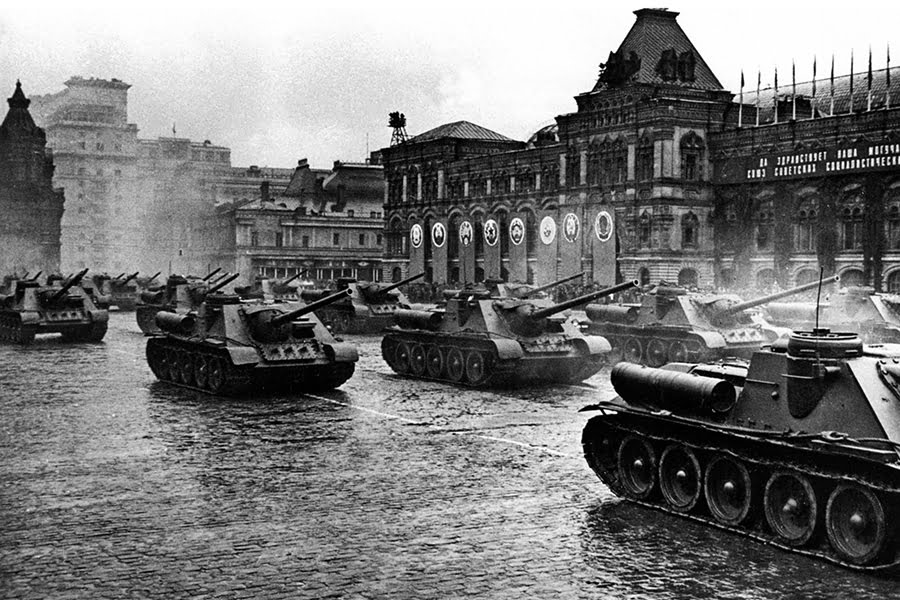
Stalinist Times
The Soviet Union was presented by propaganda as an advocate of peace and liberation for the suffering nations of Europe. At the same time, it was emphasised that the USSR played a major role in the overthrow of fascism, and the efforts of other countries were significantly downplayed. Soon after, the word “fascism” was replaced by “imperialism”, suggesting that the Western Allies were deliberately delaying the opening of a second front in Europe and trying to make a deal with Hitler. The closer the Red Army got to victory, the more Stalin’s role as a leader and a brilliant strategist was emphasised, in contrast to the early months of the German invasion. After the war, this trend continued, and the dictator became an almost divine figure bringing salvation to those oppressed by fascism. The continuity of the cult of personality was extremely important in maintaining the unity of the Soviet Union and the Eastern Bloc in the first post-war years. Simultaneously, the role and contribution of Soviet marshals such as Zhukov and Konev were diminished in propaganda. The former regained his propaganda position after Stalin’s death.
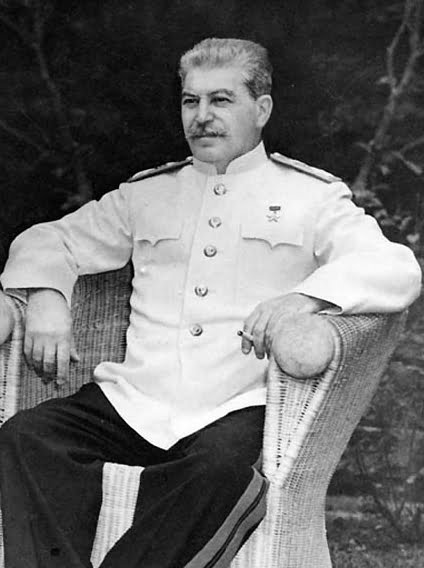
The trauma of World War II was so great that in 1947 the state celebrations of Victory Day were abandoned. It was also forbidden for veterans to form any associations. These decisions meant that Soviet soldiers could not count on proper commemoration for a long time. The entire narrative focused on Joseph Stalin and his vision of the Great Patriotic War.
After Stalin’s death — Khrushchev’s rule
Stalin’s death in 1953 was an important date not only for the Soviet Union, but also for historical policy. The changes did not happen immediately, but during the 20th Congress of the CPSU in 1956, Khrushchev presented his secret speech, in which he discussed, among other things, Stalinist terror. He stated that 20 million citizens of the Soviet Union died during World War II. This was the official number until the collapse of the USSR. In later years, he pursued the so-called policy of de-Stalinization. Historical policy under Khrushchev was a partial reflection of that of the Stalinist period in terms of terminology and rhetoric. However, decisions were made to give it a different character.
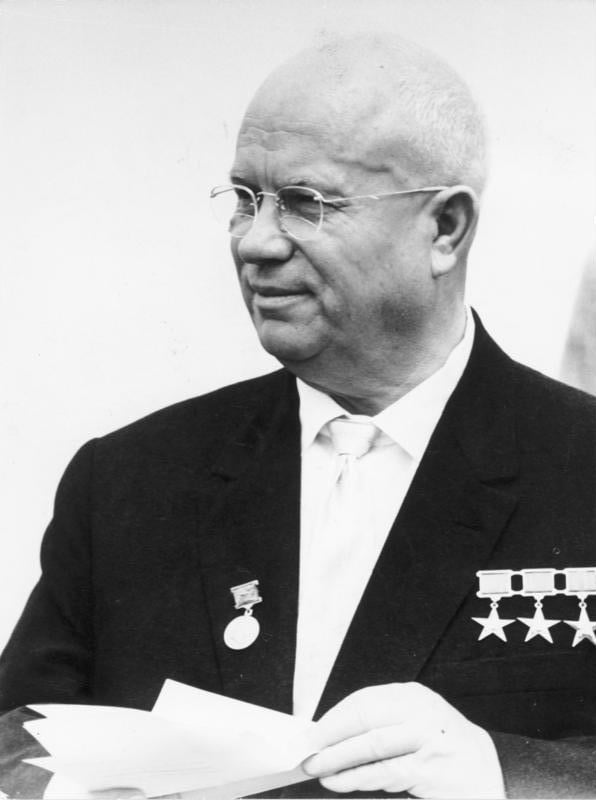
First of all, it was emphasised that the previous descriptions of the war were lacking the human touch. Therefore, it was decided that they should have more colour and life so as to interest the reader more by creating a “living historical narrative.” It was to be based on describing the heroic actions of individuals, so as to humanise the war effort more. Various writers were to work on historical books and modify the “sterile” tone of the existing works to make them easier to read for the average reader.
It was also emphasised at every step that the nations of the USSR had made a huge blood sacrifice to defeat fascism. Therefore, the presence of the Soviet army in Eastern and Central Europe was fully justified. At the same time, the subject of the first months of the war and the defeats suffered at that time were avoided. The aim was to avoid questions about why Soviet citizens had to make such sacrifices. Instead, it was emphasised how much they cost them.
Brezhnev’s policy
In 1964, Leonid Brezhnev took over the leadership of the state as a result of a plot. He halted most of Khrushchev’s reforms. In 1965, Victory Day became a public holiday. Regular parades on this day were restored. The opening of the Tomb of the Unknown Soldier in 1967 was also a significant event. The buried corpses belonged to a Red Army soldier who fought and died in December 1941 near Moscow. It was another brick in building the myth of the immortal heroes of the Great Patriotic War.
The party, led by Brezhnev, also tried to build a new, post-war society. Young people were supposed to live in “shame” before previous generations who had made huge sacrifices for the Soviet Union to persevere. The idealised vision of war was an element of social control and enforcing obedience to the party. Soviet youth were heavily indoctrinated by propaganda. There were numerous meetings between students and veterans. The soldiers themselves believed in the myth of the Great Patriotic War and talked about their experiences and great heroism.
At the same time, the events that took place in the first months of the war were continued to be downplayed. The primary narrative was that the Red Army was sure of its ultimate victory all the time, and from the first days of Operation Barbarossa it was certain that it would end its march in Berlin. Even the defeat was in fact a victory, because it brought the USSR closer to overthrowing fascism.
The 1990s
The collapse of communism in the countries of Eastern and Central Europe led to many significant changes. However, many veterans of World War II felt betrayed by the policy of the USSR leadership, which allowed the exit of European countries from the Eastern Bloc. In 1990, Mikhail Gorbachev announced that in fact the number of victims suffered during World War II was not 20 million, as per the previous narrative, but 27 million. There were also many books that spoke about even higher number, up to 50 million. At the same time, numerous narratives emerged blaming the Soviet authorities, led by Joseph Stalin, of such high war losses in the USSR.
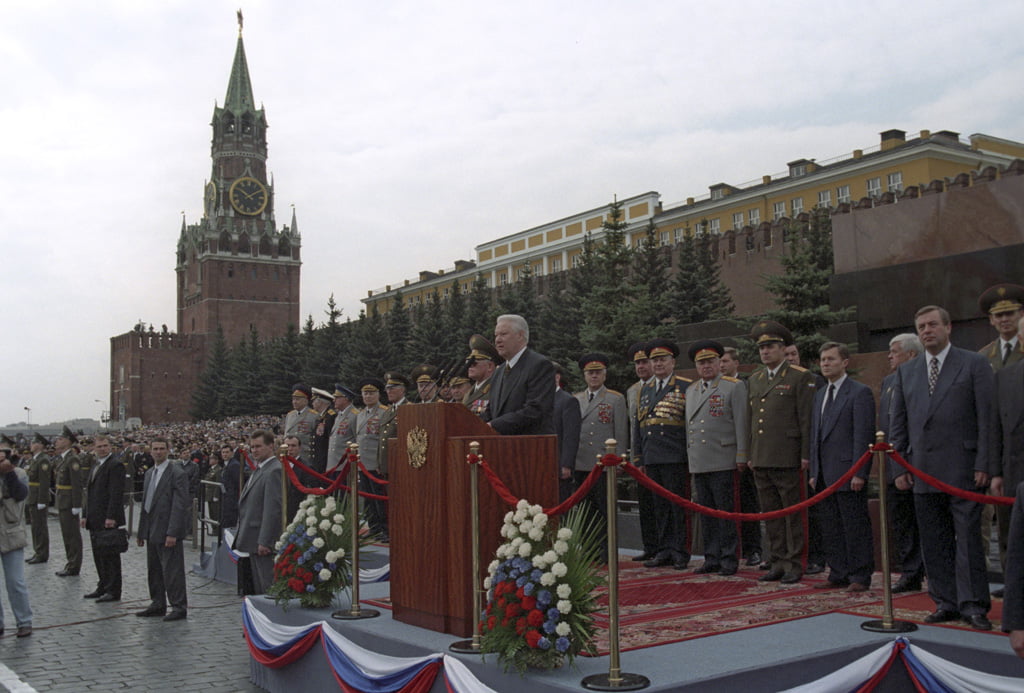
Boris Yeltsin, the first president of the Russian Federation, distanced himself from the Stalinist past. Among other things, he abandoned organising military parades. Numerous books and articles undermining the legend of the Great Patriotic War were also published during that period. At the same time, Yeltsin did not dissociate himself from the myth of World War II. In his speech in 1995, he stressed that 9 May was the date that united the post-Soviet bloc, i.e. the Commonwealth of Independent States. Despite all of this, the 90s were a kind of thaw in the perception of the Great Patriotic War. However, this was soon to change, because for the new president of Russia, Vladimir Putin, the myth of World War II was to become the central point of historical policy. We will discuss this in the next part of this series.
Sources
“Manufactured Memory: Crafting the Cult of the Great Patriotic War”, Yan Mann: https://www.jstor.org/stable/j.ctv1zjgbkq.12
Britannica: https://www.britannica.com/event/Operation-Barbarossa
Operation Barbarossa: A Deadly Turning Point in WWII: https://smithsonianassociates.org/ticketing/tickets/operation-barbarossa-deadly-turning-point-in-wwii
IWM: https://www.iwm.org.uk/history/operation-barbarossa-and-germanys-failure-in-the-soviet-union
“When Titans Clashed: How the Red Army Stopped Hitler” David M. Glantz, Jonathan M. House: https://www.jstor.org/stable/j.ctt1gsmvk1
“Bitwa o Jelnię, część 2”, Robert Michulec: https://www.magnum-x.pl/artykul/bitwa-o-jelnie-cz-2
“Russia at War, 1941–1945: A History”, Alexander Werth: https://www.amazon.com/Russia-at-War-1941-1945-History/dp/1510716254
“Russia’s War: A History of the Soviet Effort: 1941-1945”, Richard Overy: https://www.amazon.com/Russias-War-History-Soviet-1941-1945/dp/0140271694
ZBiAM: https://zbiam.pl/artykuly/moskwa-1941-cz-2/
BBC: https://www.bbc.com/russian/society/2015/07/150709_tr_panfilovs_myth_demise
“Новое о советских героях”, N. Pietrow, O. Edelman: https://magazines.gorky.media/novyi_mi/1997/6/novoe-o-sovetskih-geroyah.html
Wprost: https://historia.wprost.pl/10711834/czym-jest-wielka-wojna-ojczyzniana-prof-berendt-tlumaczy.html
Dzieje.pl:
- https://dzieje.pl/wiadomosci/wielka-wojna-ojczyzniana-sowiecki-mit-zwyciestwa-spajajacy-imperium
- https://dzieje.pl/aktualnosci/tajny-referat-chruszczowa-o-kulcie-jednostki-i-zbrodniach-stalina-0
“The Great Patriotic War as myth and memory”, Nina Tumarkin: https://www.cambridge.org/core/journals/european-review/article/abs/great-patriotic-war-as-myth-and-memory/D56CA8AC45DFE35C8C30CD18CD225E26#access-block
“Формирование образа врага в начальный период Великой Отечественной войны и переосмысление стереотипов советской пропаганды довоенного периода”, O. S. Makarowa: https://dspace.spbu.ru/bitstream/11701/44227/1/04_makarova_3.pdf
“The Motherland Calls!: Nationalist Propaganda in the Soviet Union during the Great Patriotic War”, Carolyn Blood: https://digitalcommons.linfield.edu/cgi/viewcontent.cgi?article=1000&context=histstud_theses
“The Post-Trauma of the Great Patriotic War in Russia”, Elizaveta Gaufman: https://www.digitalicons.org/wp-content/uploads/2018/05/DI18_3_Gaufman.pdf
Zdjęcia:
“For the Soviet Country, TASS No. 0534” by Aleksandr Andreevich Prokof’ev, Public domain, via Chicago-Kent College of Law
“File:German troops crossing the Soviet border.jpg” by Johannes Hähle, Public domain, via Wikimedia Commons
“File:Soviet Guards Order.png” by Andrey S. Polyakov, Public domain, via Wikimedia Commons
“File:RIAN archive 669616 Wartime city life – Moscow in October – December 1941.jpg” by RIA Novosti archive, image #669616 / Anatoliy Garanin / CC-BY-SA 3.0, CC BY-SA 3.0 <https://creativecommons.org/licenses/by-sa/3.0>, via Wikimedia Commons
“File:Мемориал Героям-Панфиловцам.jpg” by Valentina Martikhina, CC BY-SA 4.0 <https://creativecommons.org/licenses/by-sa/4.0>, via Wikimedia Commons
“File:Парад Победы на Красной площади 24 июня 1945 г. (34).jpg” by Mil.ru, CC BY 4.0 <https://creativecommons.org/licenses/by/4.0>, via Wikimedia Commons
“File:Stalin 1945.jpg” by US Army Signal Corps, Public domain, via Wikimedia Commons
Bundesarchiv, Bild 183-B0628-0015-035 / Heinz Junge / CC-BY-SA 3.0, CC BY-SA 3.0 DE <https://creativecommons.org/licenses/by-sa/3.0/de/deed.en>, via Wikimedia Commons
“File:Леонид Брежнев у вечного огня.jpg” by Mos.ru, CC BY 4.0 <https://creativecommons.org/licenses/by/4.0>, via Wikimedia Commons
“File:RIAN archive 807984 Boris Yetsin on Red Square on the Victory Day.jpg” by RIA Novosti archive, image #807984 / Vladimir Rodionov / CC-BY-SA 3.0, CC BY-SA 3.0 <https://creativecommons.org/licenses/by-sa/3.0>, via Wikimedia Commons



